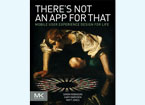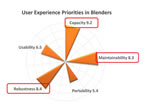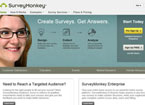Articles about Cross-Cultural
Remote User Research: Opportunities for Adoption in Asia

Language Intro (75 words) Introduction, translated into 5 languages Asia is experiencing a user research boom, with the number of professionals growing rapidly. However, remote research as a practice is still not widely accepted across all Asian countries, due in part to low awareness of tools available. To become successful, remote research platforms need to adapt to the diversity of potential recruits in Asia and make it easier for researchers to screen, schedule, and compensate participants, as well as complete translations seamlessly. [Read More]
Bridging Differences Across Cultures (Book Review)

A review of Global Social Media Design by Huatong Sun. This book provides a framework for cross-cultural social media design. [Read More]
How to Practice Cross-Cultural UX Design (Book Review)

A review of Universal UX Design by Alberto Ferreira. The book focuses on localization strategies for distinct groups. [Read More]
Activism and COVID-19: Older Southeast Asian Women Embracing Technology

A study describing how older women in Southeast Asia have used technology to spread positivity and creativity during COVID-19. [Read More]
Best Practices for Asian Language Site Localization
Localizing your site for Asia may mean a radically different design, brand-new elements, or country-specific SEO. [Read More]
How to Create a Multilingual Content Strategy
Multilanguage design (often called localization) can help websites scale and reach new international markets. But multilanguage design is more than just literal translations of words. [Read More]
Improving Digital Translation: Research Findings from Multilingual Communicators

Understanding the processes multilingual communicators use to translate content informs the user experience design of future digital translation tools. [Read More]
Growth Development: A Chinese Chasing Game to More Users

Chinese technology companies like Weibo and Alibaba are using UX to scale their businesses by turning their customer base into a fan base. [Read More]
Collaborating Across Cultures: Designing UX Studies for Japan

Designing global research requires being sensitive to cultural differences. Tokyo-based researchers, who often partner with international clients, share tips on conducting UX studies in Japan. [Read More]
Tracking User Behavior with Big Data: A Model for Detecting Pain Points in the User Experience

A combination of strategic quantitative tracking and qualitative follow-up can reveal hidden problems within a product that have meaningful business and user experience implications. [Read More]
Service Design in Long-term Oriented Cultures: How to Handle “Oh Snap” Situations

Cultural differences between Western and Asian countries can impact how customers perceive service failures. Understanding these differences can have a large impact on your business. [Read More]
Keep Asking “Why?” Curiosity, Delighting in Difference in Asia

Staying curious and hungry for new clues to context helps UX designers to build empathy with users and create intuitive solutions that address individual needs and aspirations. [Read More]
Memoir Monopoly: Improving Rehabilitation Activities for Elderly People with Dementia

Researchers in Taiwan have developed a software-based therapeutic activity to aid the rehabilitation of the growing number of people worldwide with dementia and Alzheimer’s. [Read More]
Avoiding Narcissus: Finding inspiration in Unusual Places (Book Review)

A review of There’s Not an App for That by Robinson, Marsden & Jones. Think deeply about the way you design and how you might do it differently [Read More]
Innovating with Fans: Social Games and Technology Design

When users’ expertise connects with designers’ solution expertise, new products often click. Platforms like LINE and social games like Pokémon Go show the power of connected fan communities for innovation. [Read More]
Mobile Apps for Emerging Markets: Reaching an Audience of 215 Million

Designing mobile apps for emerging markets with more than 60 languages and 215 million people requires a balance of designing, technology, user experience, and simplicity. [Read More]
Expect the Unexpected: Tips for Conducting Global Research

Global research presents unique logistical and cultural challenges that may conflict with researcher and stakeholder assumptions. Open-mindedness and preparation are key to a successful project. (Full article available in English and Español) [Read More]
Measuring Perceptions: Meeting the Challenge of Perceived Quality

Measuring user perceptions is a difficult challenge. The Perceived Quality Test helps researchers quantify users’ perceptions. (Full article available in English and Español) [Read More]
Ten Ways to Transcend Culture: Making Users’ Choices Easier

When you understand the cultural cues that support decision-making, you can make a site easier to use. (Full article available in English and Español) [Read More]
UX Research in the Top 3 Economies in Latin America: What You Should Know

Learn how to effectively conduct UX research in Brazil, Colombia, and Mexico including tips for screening, translation, running the study, observation, and interface design. [Read More]
Website Localization: 3 Basic Principles

Learn how to design your website for users from any language, any culture, anywhere. You can “localize” a website using just three principles of web design. (Full article available in English and Español) [Read More]
Cultural Preferences: Mexican-Americans on the Web

When working with multi-ethnic groups, no one-size-fits-all solution exists. U.S. Latino subgroups don't all use the same websites or encounter the same cultural pressures. (Full article available in English and Español) [Read More]
Questions to Ask in Omni-Channel UX Research: Insights from a Mobile Wallet Study in Sao Paulo

Omni-channel research for a mobile wallet study in Brazil reveals key research questions to ask to ensure you are identifying cultural nuances. (Full article available in English and Español) [Read More]
Lessons Learned: Designing a Collaborative Space for a Region

Creating a collaboration space for projects spanning 30 countries in Latin America, an organization learned lessons about the need for a strong UX process. [Read More]
Spanish Language Personas: Informing the Design of Healthcare Websites

Research for Spanish-language personas showed that Latinos in the U.S. have consistent user needs related to culture and language that are applicable to all types of health information websites. [Read More]
Language Barriers in Healthcare Information: Communicating with Bilingual Users
When adapting online health information for Latinos, employ “transcreation” or adaptation based on design guidelines that encompass cultural and linguistic needs, rather than just translation. [Read More]
¿Habla Español?: Testing and Designing for U.S. Latino Users

This article discusses a series of cross-cultural usability studies run with Spanish speaking immigrants to the U.S., looking in particular at their special characteristics and challenges. [Read More]

